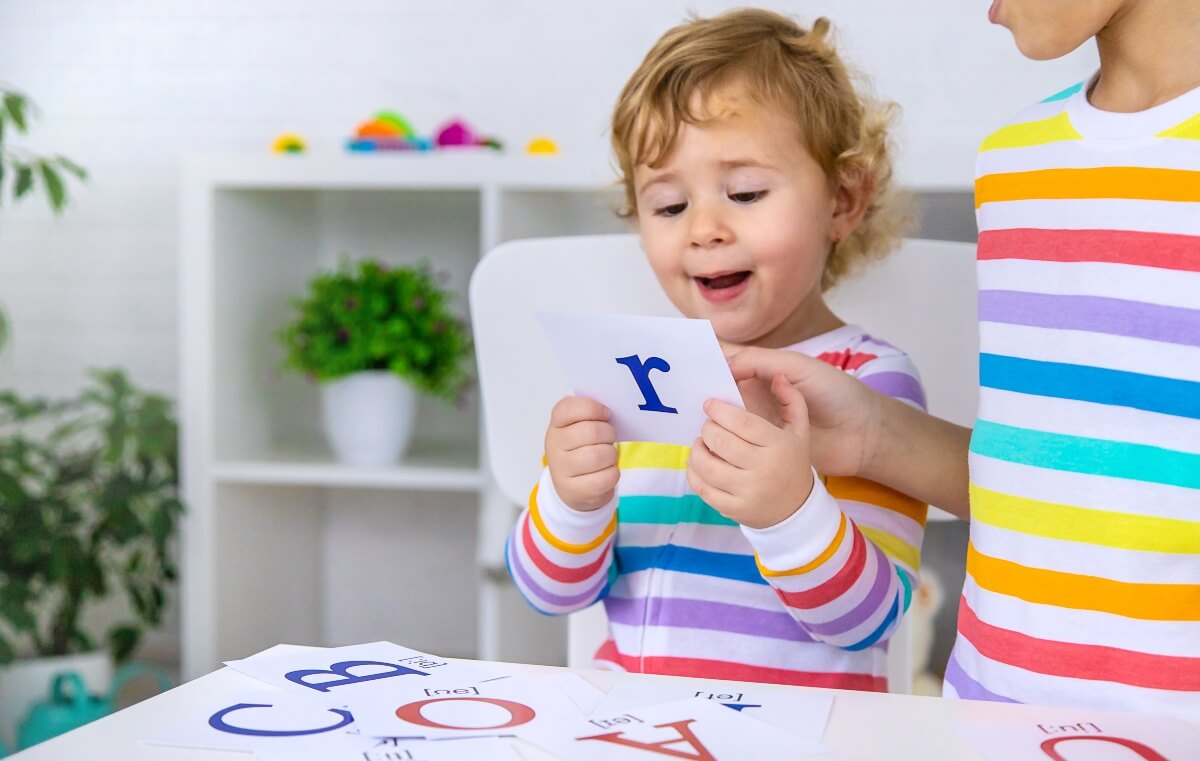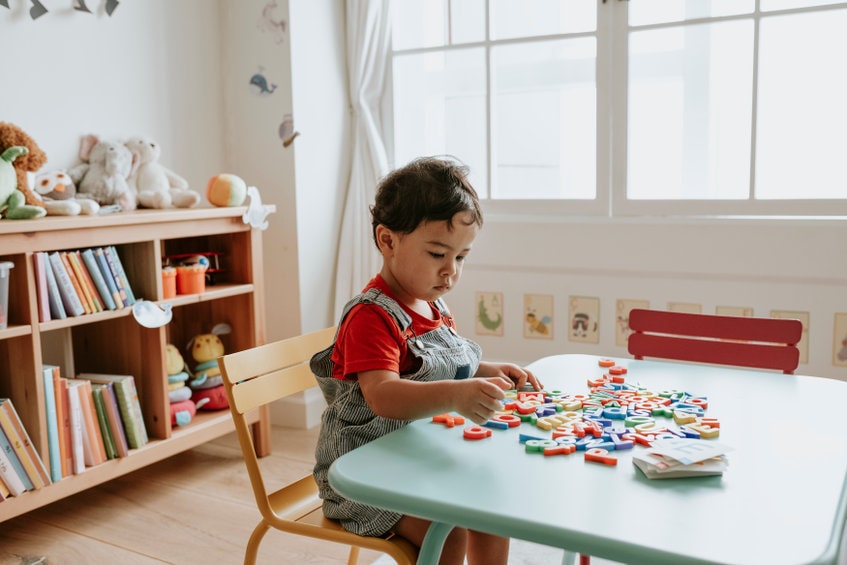The early years of a child’s life are crucial for their cognitive development, and learning the alphabet is a fundamental building block for literacy. Teaching the alphabet at home is an important way to support a child’s early literacy skills and prepare them for success in school and beyond.
By introducing the alphabet at an early age, children can develop a strong foundation for reading and writing, which are essential skills for academic achievement and lifelong learning.
There are numerous benefits to teaching the alphabet at home. First and foremost, it provides an opportunity for parents to actively engage in their child’s learning and development. By taking an active role in teaching the alphabet, parents can foster a love of learning and create a positive and supportive learning environment at home.
Additionally, teaching the alphabet at home can help children develop important pre-reading skills, such as letter recognition, phonemic awareness, and vocabulary. By introducing the alphabet in a familiar and nurturing environment, children can feel more confident and motivated to learn.
Key Takeaways
- Teaching the alphabet at home can be simple and effective
- Everyday objects can be used to teach the alphabet
- Alphabet games and activities can be incorporated into daily routines
- Reading aloud is important for teaching the alphabet
- Alphabet crafts, projects, and technology can make learning fun
Using Everyday Objects to Teach the Alphabet
One effective way to teach the alphabet at home is by incorporating letters into daily activities. For example, parents can point out letters on food packaging while cooking, or identify letters on street signs during a walk. By making letter recognition a part of everyday life, children can begin to understand the relevance and importance of the alphabet in their world.
In addition to using everyday objects, parents can also utilize household items to teach letter recognition. For instance, they can create a letter scavenger hunt using items around the house, or use magnetic letters on the refrigerator to practice spelling simple words. By making letter recognition a hands-on and interactive experience, children can develop a deeper understanding of the alphabet and its significance.
Incorporating Alphabet Games and Activities into Daily Routine
Making learning the alphabet fun and interactive is essential for keeping children engaged and motivated. There are numerous games and activities that parents can incorporate into their daily routine to teach the alphabet.
For example, they can play alphabet bingo, create an alphabet memory game, or use alphabet puzzles to reinforce letter recognition. By making learning the alphabet a fun and enjoyable experience, children are more likely to be enthusiastic about learning.
In addition to structured games, parents can also make learning the alphabet a part of everyday play. For instance, they can encourage their child to find objects that start with a specific letter, or sing alphabet songs while playing outside. By integrating alphabet learning into playtime, children can develop a positive association with the alphabet and view it as an enjoyable and natural part of their daily routine.
The Importance of Reading Aloud to Teach the Alphabet
| Method | Description |
|---|---|
| Alphabet Song | Sing the alphabet song with your child to help them memorize the letters. |
| Flashcards | Use colorful flashcards to show the letters and their corresponding images. |
| Alphabet Games | Play games like “I Spy” or “Alphabet Bingo” to make learning fun. |
| Letter Tracing | Provide tracing sheets for your child to practice writing the letters. |
| Alphabet Books | Read alphabet books together to introduce letters in a story format. |
Reading aloud to children is a powerful way to support their early literacy skills and teach them the alphabet. When parents read to their children, they are exposing them to a wide range of vocabulary and language patterns, which can help develop their phonemic awareness and letter recognition. Additionally, reading aloud provides an opportunity for children to see and hear letters in context, which can reinforce their understanding of the alphabet.
When choosing books to read aloud, parents can select alphabet-themed books that specifically focus on letter recognition and phonics. These books often feature engaging illustrations and repetitive text that can help children learn and remember the letters of the alphabet. By incorporating alphabet-themed books into reading time, parents can make the learning experience more enjoyable and meaningful for their children.
Creating Alphabet Crafts and Projects for Hands-On Learning
Engaging in arts and crafts activities is a creative way to reinforce letter recognition and make learning the alphabet fun. Parents can encourage their children to create alphabet-themed crafts, such as making a letter collage, painting with letter-shaped sponges, or creating a letter-themed mobile. By engaging in hands-on projects, children can develop fine motor skills and visual recognition of letters, while also having fun and expressing their creativity.
Using creative projects to make learning the alphabet fun can also help children make meaningful connections between letters and the world around them. For example, parents can help their children create an alphabet nature scavenger hunt, where they search for objects in nature that start with different letters. By incorporating the alphabet into creative and interactive projects, children can develop a deeper understanding and appreciation for the letters of the alphabet.
Utilizing Technology and Educational Apps for Alphabet Learning
In today’s digital age, there are numerous educational apps and technology tools that can support alphabet learning. Parents can incorporate age-appropriate educational apps into their child’s learning routine to reinforce letter recognition, phonics, and vocabulary. These apps often feature interactive games, songs, and activities that can make learning the alphabet engaging and enjoyable for children.
When selecting educational apps for alphabet learning, parents should look for ones that are designed specifically to support early literacy skills. These apps should be interactive, engaging, and aligned with the child’s developmental level. By incorporating technology into alphabet learning, parents can provide their children with additional opportunities to practice and reinforce their understanding of the alphabet in a fun and interactive way.
Making Alphabet Learning Fun with Music and Songs
Music is a powerful tool for teaching the alphabet and can help children learn and remember the letters in a fun and engaging way. Parents can use music to teach the alphabet by singing alphabet songs, creating their own alphabet rhymes, or incorporating letter sounds into familiar tunes. By making alphabet learning musical and interactive, children can develop a strong auditory and phonemic awareness of the letters of the alphabet.
In addition to singing alphabet songs, parents can also incorporate music into daily routines to reinforce letter recognition. For example, they can create a letter-themed playlist for car rides, or use musical instruments to represent different letters of the alphabet. By making music a part of alphabet learning, children can develop a deeper understanding and appreciation for the sounds and patterns of the alphabet.
Encouraging Letter Recognition through Scavenger Hunts and Treasure Hunts
Organizing scavenger hunts and treasure hunts is a fun and exciting way to encourage letter recognition and make learning the alphabet an adventure. Parents can create scavenger hunts where children search for objects that start with specific letters, or hide letter cards around the house for children to find. By turning letter recognition into a game, children can develop a sense of excitement and motivation to learn the alphabet.
Making letter recognition a fun and exciting activity can also help children develop a deeper understanding of the alphabet and its relevance in their everyday lives. For example, parents can organize a treasure hunt where children search for hidden letters and then use them to spell out simple words. By making letter recognition a hands-on and interactive experience, children can develop a strong foundation for literacy and language skills.
Establishing a Daily Alphabet Learning Routine
Creating a consistent schedule for alphabet learning is essential for supporting children’s early literacy skills and making the alphabet a natural and meaningful part of their daily routine.
Parents can establish a daily alphabet learning routine by setting aside specific times for letter recognition activities, such as during playtime, mealtime, or before bedtime. By making alphabet learning a regular and predictable part of their day, children can develop a strong and consistent foundation for literacy skills.
Making alphabet learning a part of daily routines can also help children develop a sense of security and confidence in their learning environment. By knowing what to expect and when to expect it, children can feel more motivated and engaged in their alphabet learning activities.
Additionally, establishing a daily alphabet learning routine can help parents stay organized and consistent in supporting their child’s early literacy skills.
Celebrating Alphabet Milestones and Progress
Recognizing and celebrating progress in alphabet learning is an important way to motivate and encourage children to continue developing their literacy skills. Parents can celebrate alphabet milestones, such as learning all the letters of the alphabet, recognizing letter sounds, or spelling simple words. By acknowledging and praising their child’s efforts and achievements, parents can help build their child’s confidence and enthusiasm for learning.
In addition to celebrating milestones, parents can also encourage and reward their child’s efforts in learning the alphabet. For example, they can create a sticker chart to track their child’s progress, or plan a special outing or activity to celebrate reaching a specific alphabet learning goal. By providing positive reinforcement and recognition, parents can help their children feel proud and motivated to continue learning and growing their literacy skills.
Conclusion
In conclusion, teaching the alphabet at home is a valuable and important way to support children’s early literacy skills and prepare them for success in school and beyond. By incorporating everyday objects, games and activities, reading aloud, arts and crafts, technology, music, scavenger hunts, and establishing a daily routine, parents can create a supportive and engaging learning environment for their children.
By celebrating milestones and progress, parents can help build their child’s confidence and enthusiasm for learning the alphabet. Ultimately, teaching the alphabet at home is a meaningful and rewarding way for parents to actively engage in their child’s learning and development, and set the stage for a lifetime of literacy and learning success.
FAQs
What are some simple and effective methods for teaching a child the alphabet at home?
Some simple and effective methods for teaching a child the alphabet at home include using alphabet flashcards, singing the alphabet song, playing alphabet games, using alphabet puzzles, and incorporating the alphabet into everyday activities.
How can alphabet flashcards be used to teach a child the alphabet at home?
Alphabet flashcards can be used to teach a child the alphabet at home by showing the child each letter and saying its name, asking the child to identify the letter and its sound, and using the flashcards to play games like matching or sorting.
What is the benefit of singing the alphabet song to teach a child the alphabet at home?
Singing the alphabet song can help a child learn the order of the letters in the alphabet and the sound of each letter. It can also make learning the alphabet more fun and engaging for the child.
How can alphabet games be used to teach a child the alphabet at home?
Alphabet games, such as “I Spy” or “Alphabet Bingo,” can help a child learn the letters of the alphabet by making the learning process interactive and enjoyable. These games can also help reinforce letter recognition and letter sounds.
Why are alphabet puzzles effective for teaching a child the alphabet at home?
Alphabet puzzles can help a child learn the shapes of the letters and how they fit together to form words. They can also improve a child’s fine motor skills and hand-eye coordination while learning the alphabet.
How can parents incorporate the alphabet into everyday activities to teach their child at home?
Parents can incorporate the alphabet into everyday activities by pointing out letters on signs, packaging, and books, encouraging the child to find and identify letters in their environment, and using alphabet letters to spell out words related to daily activities, such as mealtime or bedtime.


